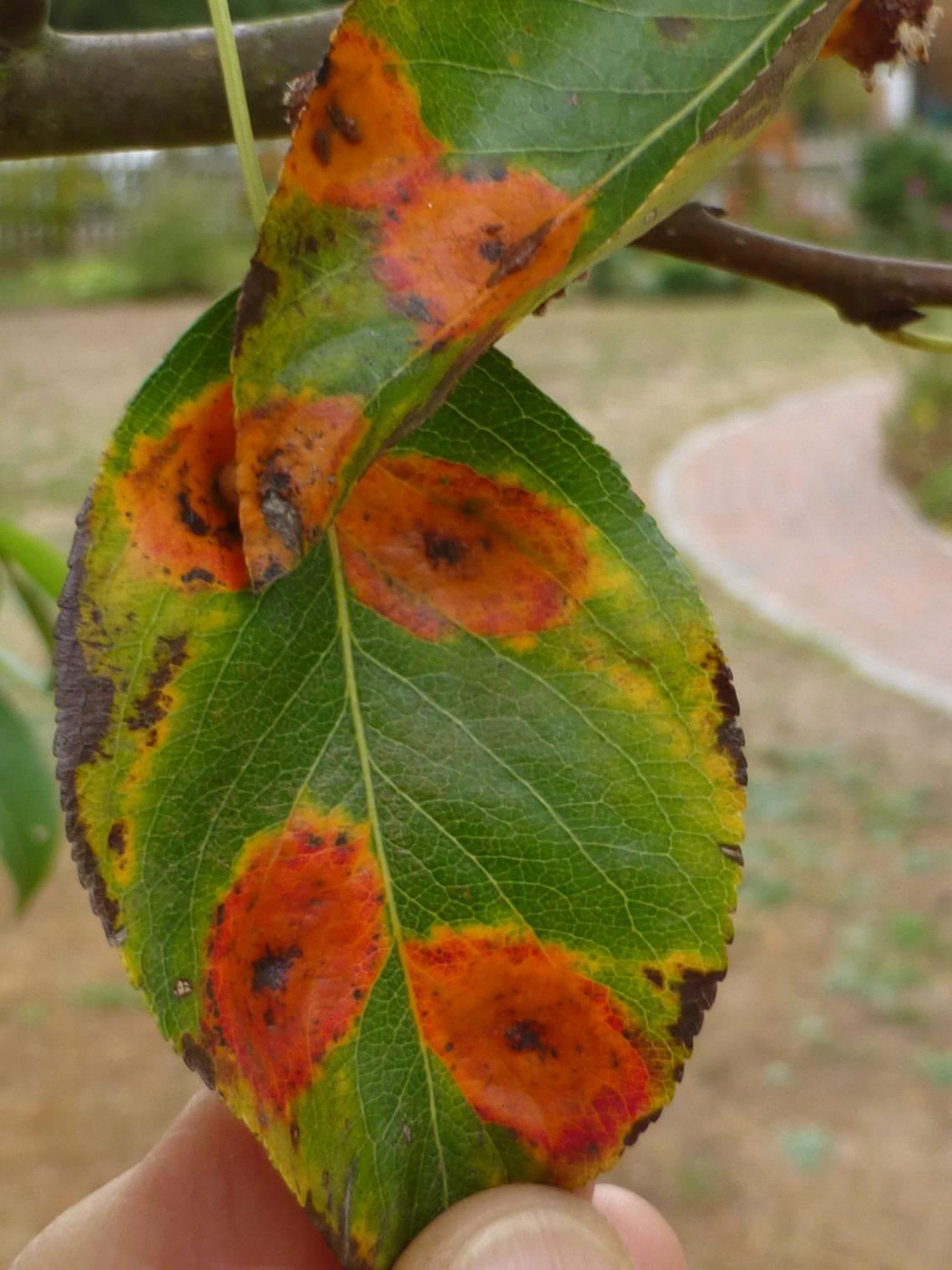by Vancouver Island Master Gardeners Association
Question: What causes the irregular, orange patches on the leaves of my pear tree?
Answer: Pear Trellis Rust
Affects Pear trees (Pyrus sp.) and many species of juniper (Juniperus sp.).
Some or most of the leaves show irregular orange patches, often with black centers, on the top and later in the year, grey tubular structures are seen on the underside of the affected leaves. Early signs are seen on pear leaves in late spring and disease signs progress throughout the season.
Gymnosporangium fuscum or pear trellis rust is a fungus which requires two hosts: pear trees and junipers. As gardeners, we are more often concerned about pears. If there is a severe infection, fruiting and growth of the tree may be affected. Weather influences severity of the disease as it affects the spread of spores from junipers to pears.
If it is possible to remove all Junipers within a minimum of 100 feet (33 m) of the pear tree and dispose of the Juniper through landfill. Unfortunately, this is usually impractical, although rust-susceptible juniper species can be replaced with more resistant species e.g. J. horizontalis, or J. communis. To prevent re-infection of Junipers in the fall, affected leaves from the pear should be picked off and destroyed. Swollen areas on pear tree twigs should be cut out during the winter and destroyed.
On pear trees, signs are most obvious from spring through late summer/fall. On Junipers, swollen growths on stems covered with orange masses of spores are noticeable only in spring.


Photo courtesy: Dorothee Kieser.
For gardening questions in the growing season, contact the Gardening Advice Line.

